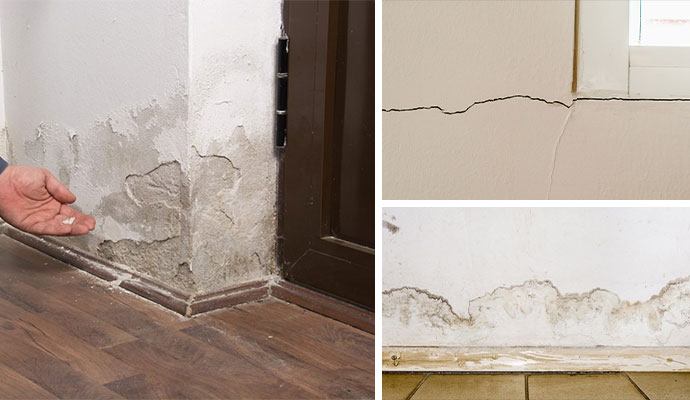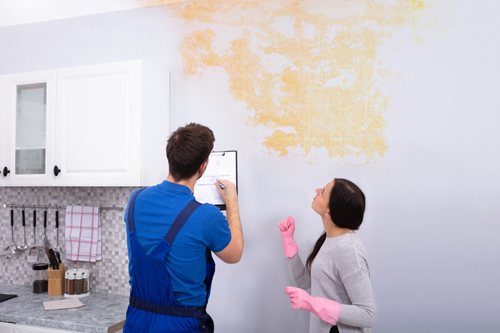Steps to Check and Repair Water Stains on Walls
Steps to Check and Repair Water Stains on Walls
Blog Article
How do you really feel about Indicators of Water Damage Behind Walls?

Water stains on walls are not enjoyable to the eyes. Your house ought to be without spots on the walls, roofing, or floorings. That is the suitable state of a residence and also its frameworks. Yet, occasionally it appears nearly unpreventable to experience water discolorations on walls in residences.
Homeowners living in humid areas regularly deal with the concern of water spots on walls. With precise and well-rounded details on the reasons of water spots and prompt fixing procedures, you will always be an action ahead of such occurrences.
3 Usual Root Causes Of Water Spots on Walls
Unlike common belief, water spots on walls do not constantly come from poor structure materials. There are several sources of water spots on walls. These consist of:
Moist
When warm damp air meets with completely dry chilly air, it causes water beads to form on the wall surfaces of structures. When there is heavy steam from cooking or showers, this occurs in cooking areas and also shower rooms. The water beads can discolor the surrounding walls in these parts of your residence as well as spread to other areas.
Wet or condensation affects the roofing and also walls of structures. When the wall surface is wet, it creates an appropriate setting for the growth of fungi and microorganisms.
Poor Drain
When making a building strategy, it is essential to make sure ample drainage. This will certainly protect against water from seeping into the wall surfaces. Where the water drainage system is clogged or nonexistent, below ground dampness accumulates. This web links to too much moisture that you observe on the wall surfaces of your structure.
So, the leading reason for wet walls, in this case, can be a poor water drainage system. It can also be due to poor administration of sewage pipelines that go through the structure.
Pipeline Leaks
Most homes have a network of water pipes within the walls. It always increases the viability of such pipes, as there is little oxygen within the walls.
A downside to this is that water leakage affects the walls of the structure and also creates extensive damage. An indicator of defective pipelines is the look of a water discolor on the wall.
Pro Tip
A houseplant in your house also raises its moisture. If the house is currently damp, you might desire to introduce houseplants with marginal transpiration. An instance of suitable houseplants is succulents.
Water Discolorations on Wall: Fixing Tips
When dealing with water stains, property owners would normally want a quick solution. They would quickly recognize this is counterproductive as the water discolorations repeat. Below are a few handy ideas that will lead you in the repair service of water stains on wall surfaces:
Conclusion
No one wants to have water spots on wall surfaces in their home, it can occur to the ideal of us. This short article offers you leverage, as you now understand just how to handle this incident if it does take place.
It is always best to recruit expert solutions to help take care of the problems in your home.
In some cases it seems virtually inevitable to experience water spots on wall surfaces in residences.
Contrary to popular belief, water discolorations on wall surfaces do not always stem from poor building products. There are numerous reasons of water stains on walls. The water droplets can discolor the bordering wall surfaces in these components of your residence and also spread to other areas.
Right here are a couple of practical pointers that will guide you in the repair work of water spots on walls:
CHECKING FOR WATER DAMAGE
Water damage can be costly, and it may begin before you even notice the first signs of trouble. Water damage can cause mold and mildew in your walls and floors, which can create an abundance of health concerns for your family. It can also lead to costly repairs of various appliances and general home fixtures. To avoid the pricey consequences of water damage, here are Warner Service s top 5 places you should check:
The walls The easiest place to spot the beginnings of water damage is on the walls and ceilings of your home. If water damage is present, there will most likely be water stains, especially around the windows and doorframes, and/or cracks in the drywall. If a stain looks unusual (discolored to brown, black or gray, raised texture), has a swollen appearance or is soft to the touch, contact a professional immediately. The pipes To avoid water damage, consistently check the pipes in your kitchen (especially the dishwasher and ice maker), bathrooms, laundry room (specifically washing machines) and basement for corrosion, leaks and water stains. Pay special attention to where the pipes connect in your home and the location of caulking around the bathroom fixtures, including toilets, sinks, showers and tubs. Missing or loose caulking and grout could be signs of leaking water. This seepage can also quickly cause mold and rust, so double check your water heater and tank for wet spots on the floor. The floor Water damage is very easy to spot on the floor. Look for any warping or buckling of the material, especially in the basement. If your home has wood flooring, look for bright white or dark stains. If your home has carpeting, keep it dry and clean. A damp carpet that smells of mold could cause water damage and health problems. To avoid this, consider installing floor pans under your appliances to help prevent damages from small, slow and undetected leaks. The basement and attic If your basement or attic smells odd check for mold and mildew around the area, especially the valley where the roof meets. While you are inspecting those areas, check for wall cracks, floor stains, rust and dampness in the insulation. If you live in a colder and/or rainier climate, perform routine checks for water damage from melting snow or ice and rain. The exterior Check the roof for damaged flashing and missing, cracked or curled shingles. There should also be no standing water anywhere outside your home. This could be caused by puddles, leaky rain gutters or hoses, poor drainage, or short gutter spouts. Invest in a sump pump system or water flow monitoring system, and perform routine maintenance on these outdoor appliances to avoid indoor water damage.

As an avid reader on Water Stains on Walls, I thought sharing that short article was a smart idea. Loved our piece? Please share it. Let others discover it. We cherish reading our article about How to Find and Repair Water Leaking in the Wall.
Call Today Report this page